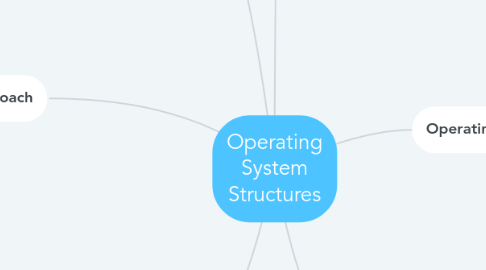
1. Communication Models
1.1. Message passing model
1.1.1. Communication takes place by means of messages exchanged between the cooperating process.
1.1.2. useful for exchange small amounts of data
1.1.3. easy to implement than shared memory
1.2. Shared memory
1.2.1. A region of memory that is shared by cooperating processes is established.
1.2.2. Process can exchange information by reading and writing data to the shared region.
2. Layered Approach
2.1. Can then retain much greater control over the computer and over the application that make use of that computer.
2.2. Advantages
2.2.1. Simplicity of construction and debugging
2.3. Disadvantages
2.3.1. Less efficient
2.3.2. The careful definition and interaction of the layers
3. Microkernel
3.1. To provide a communication facility between the client program and the various services that are also running in user space.
3.2. Advantages
3.2.1. Extensibility
3.2.2. Flexibility
3.2.3. Reliability
3.2.4. Portability
4. Operating System Services
4.1. User interface
4.2. Program execution
4.3. I/O operation
4.4. File-system manipulation
4.5. Communications
4.6. Error detection
5. System Calls
5.1. Used by an application program to invoke a function provide by the operating system.
5.2. Types of system calls:
5.2.1. Process control
5.2.2. File management
5.2.3. Information maintenance
5.2.4. Communications
5.2.5. Protection
6. Operating system Design Goals
6.1. User Goals
6.1.1. convenient to use
6.1.2. easy to learn
6.1.3. reliable
6.1.4. safe
6.1.5. fast
6.2. System goals
6.2.1. easy to design
6.2.2. implement
6.2.3. maintain
6.2.4. flexible
6.2.5. reliable
6.2.6. error-free
6.2.7. efficient

